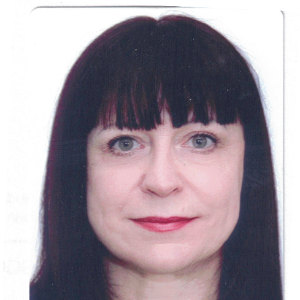Title : The study of antimicrobial activity of synthesized and natural-source chemical compounds by optical fluorescence respirometry using a Ru(II)-based oxygen-sensitive sensor
Abstract:
The determination of the number of microorganisms is very important a.o. in the field pharmacy, biotechnology or clinical microbiology. Studying the antimicrobial properties of natural or synthetic products requires testing many samples, against many bacteria or fungi in a short time. Counting microorganisms on the agar plates, and membrane filters, and using the “most probable number" are basic methods used to determine of the living cells. These methods require a long incubation time (1-5 days), colonies may be formed by several related species of microorganisms, and full identification takes up to seven days. In turn, the serial dilution method in broth is used for the determination of the minimal inhibitory concentration (MIC). The length of assay time and the impact of the physical properties of the sample affect the results. We used fluorescent optical respirometry (FOR) for the analysis of the aerobic bacteria and yeasts. In this method tested organisms growing, consume oxygen, resulting in an effect on the fluorescence intensity of the sample. The biosensor signal is quenched by oxygen in a reversible, non-chemical way, and oxygen reduction in the concentration of dissolved oxygen (which is associated with microbial growth and aerobic respiration) causes a significant increase in biosensor fluorescence emission. Monitoring of the changes in fluorescence intensity in cultures allows, therefore, to observe the metabolic activity of organisms, and the influence of physical factors and chemical compounds on organisms activity in real-time (Alderman et al., 2004; Hałasa et al., 2014, O’Mahony et al., 2006). The oxygen-sensitive sensor, ruthenium-tris(4,7-diphenyl-1,10-phenanthroline) dichloride (Ru(dpp)3Cl2) adsorbed on the DavisilTM silica gel, embedded in the silicone rubber Lactite NuvaSil® 5091 and coating on the bottom of 96-well plates, was used. The FOR method was performed to evaluate the effect of chemical and environmental factors, and plant extracts on aerobic bacteria or yeasts. The FOR method allows to detection of microorganisms in some sterile and non-sterile pharmaceutical products. This method allows also for the rapid, unequivocal detection and counting of living bacterial cells.
Audience Take Away Notes:
The presentation will provide information about research using the method that allows:
- To reduce the time of analyzing the antimicrobial properties of new drugs
- To reduce the time of analyzing the sterility or microbiological purity of drugs;
- To test many samples, against many bacteria or fungi in a short time;
- For analysis of the kinetics of the culture growth of bacteria and fungi and determination of growth parameters, such as generation of time in microorganism cultures;
- Fluorescent optical respirometry provides much more information about the effects of chemicals on microorganisms than traditional methods. In particular, this applies to chemical concentrations lower than in MIC. This gives more possibilities of the interpretation of experiments and an opportunity to develop effective methods for the analysis of the synergistic effects of the antimicrobial compounds.


